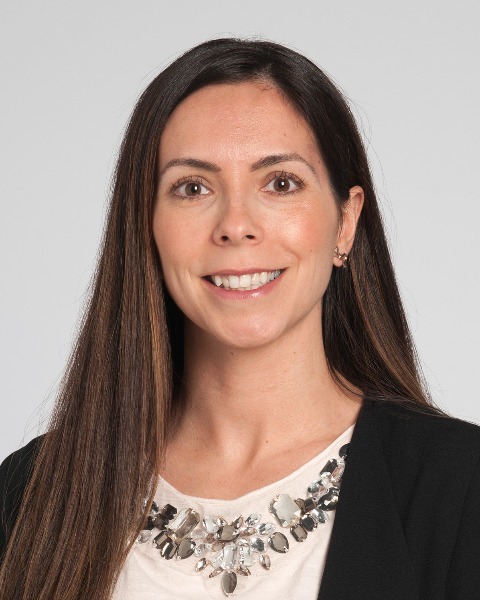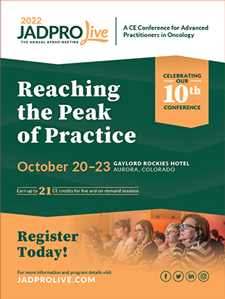Back


Clinical Posters
JL1004C: Advanced Practitioner Leadership, Achievements in Increasing Satisfaction and Reducing Burnout
Saturday, October 22, 2022
10:00 AM – 11:00 AM ET

Has Audio

Heather Koniarczyk, MSN, APRN-CNP, AOCNP
APP Director
Cleveland Clinic Cancer Center
Poster Presenter(s)
OBJECTIVE
As AP leaders, we tend to be skills at managing utilization, scope, and quality of practice. Satisfaction and burnout are difficult landscapes to address and make effective changes within. Our cancer center addressed engagement and burnout with recognizable success.
INTERVENTION
AP Leadership utilized multiple years of Press Ganey data, the NCCN APP Best Practice Committee survey, Annual Performance Review (APR) feedback and regular staff meeting comments to identify areas of high impact, high reward to focus our efforts. With implementing strategies around key items, our institution was able to have a top score on the NCCN best practice committee satisfaction survey completed in 2021.
DISCOVERIES
AP leaders synthesized the above data to identify most valuable items to the APs. These include: APs reporting to AP leaders, Right people doing the right work, Competitive pay, Growth opportunities and Flexibility.
ACTIONS
AP leadership FTE growth was achieved during this time by providing deliverable outcomes of growing the leadership including: Revenue generation by documentation auditing and education, new clinical opportunities and procedures, cost savings by quality improvement work, and better access by working with physician leaders to understand AP productivity metrics. We hypothesized a larger AP leadership team would better affect engagement, reduce turnover and further cost savings. The AP leadership team grew from 3 FTEs/ 89 APs to 7 FTEs/122 APs from 2019 to 2022. Relationship building and trust were instrumental our survey success. Other methods included leadership training and clear role and responsibilities for APs.
Poorly assigned duties are a major dissatisfier. Clerical work, documentation tools, scheduling, and care coordination create workflow inefficiencies. Not having enough team members to get the job done safely was another theme identified. We defined staffing ratios/clinic templates using evidence-based principles, invested in back up staffing and floating models to fill staffing gaps. Leadership also advocated for regular market assessments and wage adjustments to support a competitive pool of applicants which was achieved twice in the last 5 years. Our teams were asking for workhour flexibility. We found giving flexibility (where possible) has created a culture of ownership and responsibility for their team, goals and outcomes. We support self-scheduling inpatient and moved from 5- 8s to 4-10s. Outpatient APs have dedicated time from clinic for practice support activities (peer to peers, EMR inbox management, survivorship, coordination, projects, and committee work) and control over template start/stop times.
It is well published that professional development (PD) reduced burnout in clinicians. PD activities include: implementing antineoplastic prescribing, fellowship program, committees, and AP led consults. Time away is supported for projects, publications and speaking engagements.
PROPOSALS
We propose cancer centers advocate for AP leadership structures that support opportunities for increasing project work, publications, speaking engagements, and relationship building with their teams. This has shown to be beneficial to the direct reports and financially impactful to our cancer center in a favorable way. Engagement work can be more meaningful and structured as well as a better opportunity for resource allocation with appropriate leadership.
SUMMARY
APs are skilled professionals who are prone to burnout and disengagement in line with physician and nursing colleagues. Careful attention, direct action planning and leadership support can have a significant impact on AP satisfaction, especially if utilizing the voice of the AP to direct the efforts.
As AP leaders, we tend to be skills at managing utilization, scope, and quality of practice. Satisfaction and burnout are difficult landscapes to address and make effective changes within. Our cancer center addressed engagement and burnout with recognizable success.
INTERVENTION
AP Leadership utilized multiple years of Press Ganey data, the NCCN APP Best Practice Committee survey, Annual Performance Review (APR) feedback and regular staff meeting comments to identify areas of high impact, high reward to focus our efforts. With implementing strategies around key items, our institution was able to have a top score on the NCCN best practice committee satisfaction survey completed in 2021.
DISCOVERIES
AP leaders synthesized the above data to identify most valuable items to the APs. These include: APs reporting to AP leaders, Right people doing the right work, Competitive pay, Growth opportunities and Flexibility.
ACTIONS
AP leadership FTE growth was achieved during this time by providing deliverable outcomes of growing the leadership including: Revenue generation by documentation auditing and education, new clinical opportunities and procedures, cost savings by quality improvement work, and better access by working with physician leaders to understand AP productivity metrics. We hypothesized a larger AP leadership team would better affect engagement, reduce turnover and further cost savings. The AP leadership team grew from 3 FTEs/ 89 APs to 7 FTEs/122 APs from 2019 to 2022. Relationship building and trust were instrumental our survey success. Other methods included leadership training and clear role and responsibilities for APs.
Poorly assigned duties are a major dissatisfier. Clerical work, documentation tools, scheduling, and care coordination create workflow inefficiencies. Not having enough team members to get the job done safely was another theme identified. We defined staffing ratios/clinic templates using evidence-based principles, invested in back up staffing and floating models to fill staffing gaps. Leadership also advocated for regular market assessments and wage adjustments to support a competitive pool of applicants which was achieved twice in the last 5 years. Our teams were asking for workhour flexibility. We found giving flexibility (where possible) has created a culture of ownership and responsibility for their team, goals and outcomes. We support self-scheduling inpatient and moved from 5- 8s to 4-10s. Outpatient APs have dedicated time from clinic for practice support activities (peer to peers, EMR inbox management, survivorship, coordination, projects, and committee work) and control over template start/stop times.
It is well published that professional development (PD) reduced burnout in clinicians. PD activities include: implementing antineoplastic prescribing, fellowship program, committees, and AP led consults. Time away is supported for projects, publications and speaking engagements.
PROPOSALS
We propose cancer centers advocate for AP leadership structures that support opportunities for increasing project work, publications, speaking engagements, and relationship building with their teams. This has shown to be beneficial to the direct reports and financially impactful to our cancer center in a favorable way. Engagement work can be more meaningful and structured as well as a better opportunity for resource allocation with appropriate leadership.
SUMMARY
APs are skilled professionals who are prone to burnout and disengagement in line with physician and nursing colleagues. Careful attention, direct action planning and leadership support can have a significant impact on AP satisfaction, especially if utilizing the voice of the AP to direct the efforts.

